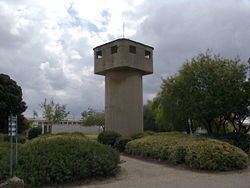Website www.alonim.org.il Local time Sunday 9:07 PM | Population (2015) 470 Founded June 1938 | |
 | ||
Weather 14°C, Wind W at 8 km/h, 74% Humidity | ||
Alonim (Hebrew: אַלּוֹנִים, lit. Oaks) is a kibbutz in northern Israel. Located in the Lower Galilee, it falls under the jurisdiction of Jezreel Valley Regional Council. In 1947 Alonim had a population of over 450; in 2015 it was 470.
Contents
Map of Alonim, Israel
History
In the Ottoman era, a village called Qusqus, or Kuskus, was situated here. In 1859, the population was given as 100, with 16 feddans of tillage.
In 1875 Victor Guérin visited, and estimated that the village had 200 inhabitants. In 1881, the Palestine Exploration Fund's Survey of Western Palestine described Kuskus as an adobe village, in the oak-woods, on high ground.
British Mandate era
In 1925 a Zionist organisation purchased 30 feddans in Kiskis (present Alonim) and Tabon (present Kiryat Tiv'on) from the Sursuk family of Beirut. At the time, there were 36 families living there. From 1931, and lasting several years, the Jewish Agency struggled to evict the tenant farmers from Qusqus, from the land which was to become Alonim.
The Alonim kibbutz was established on 26 June 1938 as part of the tower and stockade settlement campaign. The settlers were the first graduates of Youth Aliyah.
During the 1936–39 Arab revolt in Palestine, Alonim was frequently attacked and three of its members were killed. It began as an orchard and dairy farm, and manufactured flutes, which were highly popular with Israeli children. Alonim has become a popular name in Jewish camping. There Is a Camp Alonim in Simi Valley, California, and the name Alonim is the name of the oldest age group at Camp Ramah in Canada.
By 1945, al Tivon (Alonim) (previously Qusqus Taboun) had 370 Muslim and 320 Jewish inhabitants, with a total land area of 5,823 dunams. Of this, 141 dunams were used for plantations and irrigable land, 2,038 for cereals, while 3,644 dunams were classified as non-cultivable land.
